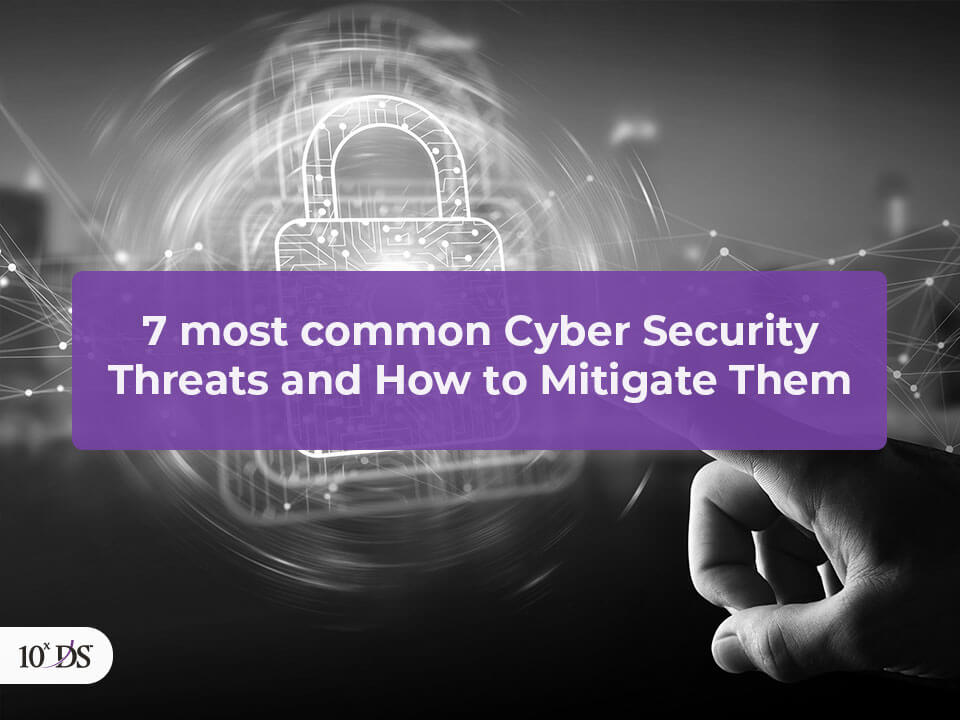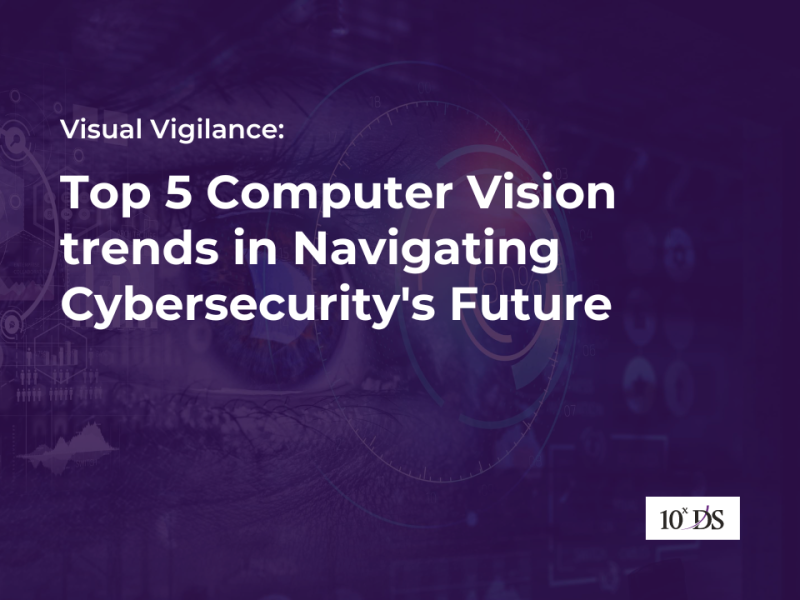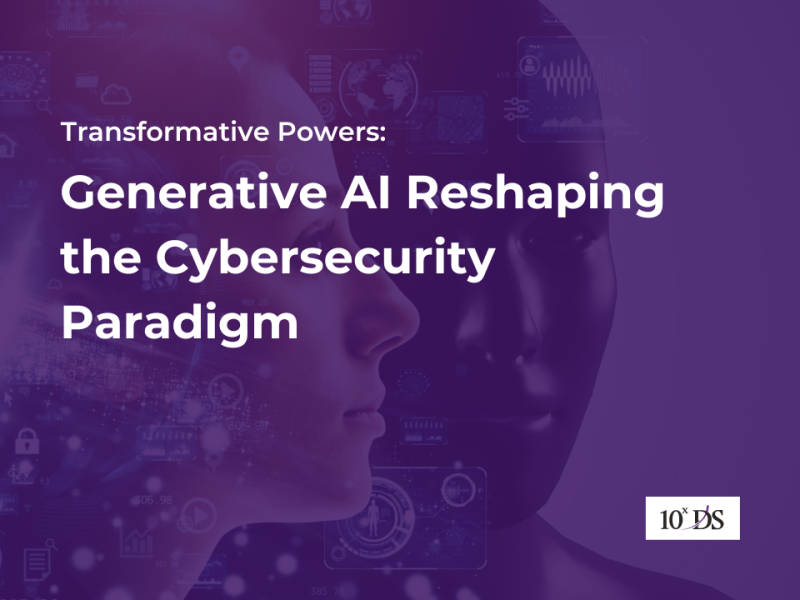
7 Most Common Cybersecurity Threats and How to Mitigate Them
The digital world is growing at an exponential rate, so fast that is difficult to comprehend how to counter the growing shadow world of cybercrimes. According to Statista, the global indicator ‘Estimated Cost of Cybercrime’ in the cybersecurity market was forecast to continuously increase between 2023 and 2028 by in total 5.7 trillion U.S. dollars (+69.94 percent). After the eleventh consecutive increasing year, the indicator is estimated to reach 13.82 trillion U.S. dollars and therefore a new peak in 2028. Currently in 2024, it is at 9.22 trillion dollars. Notably, the indicator ‘Estimated Cost of Cybercrime’ of the cybersecurity market was continuously increasing over the past years. However, even in the various types of attacks, there are definite patterns followed. Cyberattacks are steps, activities or actions performed by individuals or an organization with a malicious and deliberate motive to breach information systems, computer systems, infrastructures or networks.
Threat mitigation in cybersecurity involves identifying, analyzing, and implementing measures to minimize the impact of potential cyber threats, aiming to safeguard digital assets and systems against malicious activities such as hacking, data breaches, and malware infiltration.
Let’s look at some of the common types of cyber-attacks:
1. Phishing
Phishing happens when people with malicious motive sends fraudulent communications to users with the intent of getting sensitive information such as credit card and login information or to install malware. Most of the time the communications appear to come from a reputable individual, usually through email. Using different techniques such as social engineering and other technical trickery, the cybercriminals pretend to be someone or something genuine and get sensitive details.
Phishing attacks are increasing every day and it’s necessary to guard against it. Users should analyse the email thoroughly and also hover over the links in the email and check if the link redirects them to a genuine website.
2. Distributed Denial-of-Service (DDoS)
A Denial-of-Service attack aims at interfering and compromising network availability, for instance, flooding a website with a huge amount of traffic, taking up the entire server bandwidth. The sites will be unable to provide legitimate requests or services. These attacks usually target large organizations using multiple compromised devices to attack. It is important to understand the types and levels of cyber risk mitigation required. Mere setting up of firewalls and close monitoring may not suffice, DDoS mitigation should be part of the business continuity and disaster recovery plans of organizations.
Having efficient DDoS mitigation services in place can help defeat such attacks and with regular testing, the mitigation can work as planned.
3. Malware
Malware is a collective term used to describe different types of malicious software such as ransomware which blocks access to key components of the network, spyware which covertly gains sensitive information by transmitting data in the hard drive and different types of viruses disrupting certain components and affecting the system.
The best way to prevent this is by using the latest version of anti-malware software on all devices to seek and destroy malicious programs such as viruses. It is always best to scan personal or business systems regularly and keep the software updated. Enable spam filters to block or quarantine email messages with suspicious content or from unknown senders. Systems can be best protected against malware attacks if there are firewalls and intrusion detection systems acting as traffic cops for network activity and block suspicious activities.
4. Brute-force attacks
A brute force attack is simple in its approach to gain access to systems or online accounts, trying all the possible ways to crack the password using various algorithms and eventually finding the right one.
The best way to counter a brute force attack is to catch it in progress before attackers have access to the network. Its always better to have a strong password with minimum 8 characters including a combination of lowercase, uppercase letters, numbers and special symbols.
5. SQL injection attack
Structured Query Language (SQL) injection attacks the target’s vulnerable websites to gain access to stored data. The attacker inserts the harmful code into a server using SQL and gains access to sensitive information such as usernames, passwords and any amount of personal information stored in the database.
The threat of SQL injection can be detected manually leveraging some useful tests against every entry point in the application. Some of the steps include submitting the single quote character ‘ and looking for errors. You can look for differences in the responses by submitting Boolean conditions OR 1=1 and OR 1=3. Assessing time delays within an SQL query by submitting payloads specifically designed for it can also help to detect the attacks.
6. Man-in-the-middle attack
A Man-in-the-Middle attack, popularly known as eavesdropping attack, happens when an attacker manages to intercept and hijack a connection in a two-party transaction to eavesdrop. The mastery of the attack is in the fact that the two parties will have no idea that the connection is being intercepted by the attacker who can easily filter and steal data.
There are two common points of entry for such attacks. First one is using an unsecured public Wi-Fi to intercept connection to the visitor’s device and the network. The second entry point is by using malware to breach a device, tap into the information shared by the victim.
7. DNS tunnelling
DNS tunnelling is a solution to exchange data or transmitting information using the DNS protocol. Usually, a domain name system query only contains the information necessary to communicate between two devices. When used to extract data silently or to establish a communication channel with an external malicious server, DNS tunnelling inserts an unrelated stream of data into that pathway. It is this secure movement which allows the data to pass through the network unnoticed. Attackers can use DNS requests to manipulate data to gain access to information from a compromised system. Since it often unmonitored and unsecured, DNS tunnelling works very well.
The best way to prevent it is to use the right tools looking at complex data extraction and attacks originating from pre-configured packages. Another useful way to prevent is to invest in a DNS firewall to identify possible intrusions and real-time analytics using a DNS security solution. Security tools having the functionality to blacklist suspicious destinations can help prevent possible attacks.
Conclusion
These were some of the most common patterns or types of cyber-attacks. It is always better to keep abreast of the latest attack patterns and threat landscape to identify vulnerabilities and come up with solutions to mitigate risks. An attack can happen at any household, any organization large or small, and even start-ups can be targeted. The attack complexities and tactics used are getting advanced and though there is no foolproof system in this world, following some standard levels of security can make a huge difference.
It is best to create essential security awareness to the staff to help them spot warning signs and trigger alerts. Systemic monitoring of security log files can give the security team early warnings of possible attacks. Another essential step to reduce attacks is to restrict access rights to the staff based on roles and requirements. Enable two-factor authentications and encrypt sensitive data to secure stolen devices and protect data respectively.
In the realm of threat mitigation in cybersecurity, advancements in artificial intelligence and machine learning algorithms are anticipated to play a significant role in enhancing proactive threat detection and response capabilities. Additionally, the integration of threat intelligence sharing platforms and collaborative defense mechanisms among organizations are expected to bolster collective resilience against evolving cyber threats.
Want to gain further insights on how to better safeguard your critical assets against security threat or how to develop a strong security strategy? Talk to our cybersecurity experts!


